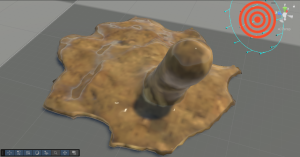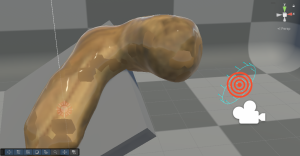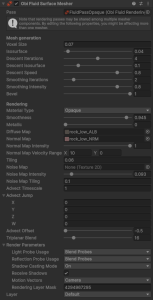01-08-2025, 12:30 PM
Excuse me again.
In the SolidifyOnContact example, when I used a fluid with Diffusion and Normal textures, the result was as follows.
Liquid is correct diffusion and normal.

Solid is weird diffusion and normal texture.

Inspector used for ObiFluidSurfaceMesher

It seems that something is wrong because the invMass of the solidified particles becomes 0, but I couldn't figure it out even after looking at the shader graph.
In the SolidifyOnContact example, when I used a fluid with Diffusion and Normal textures, the result was as follows.
Liquid is correct diffusion and normal.
Solid is weird diffusion and normal texture.
Inspector used for ObiFluidSurfaceMesher
It seems that something is wrong because the invMass of the solidified particles becomes 0, but I couldn't figure it out even after looking at the shader graph.





